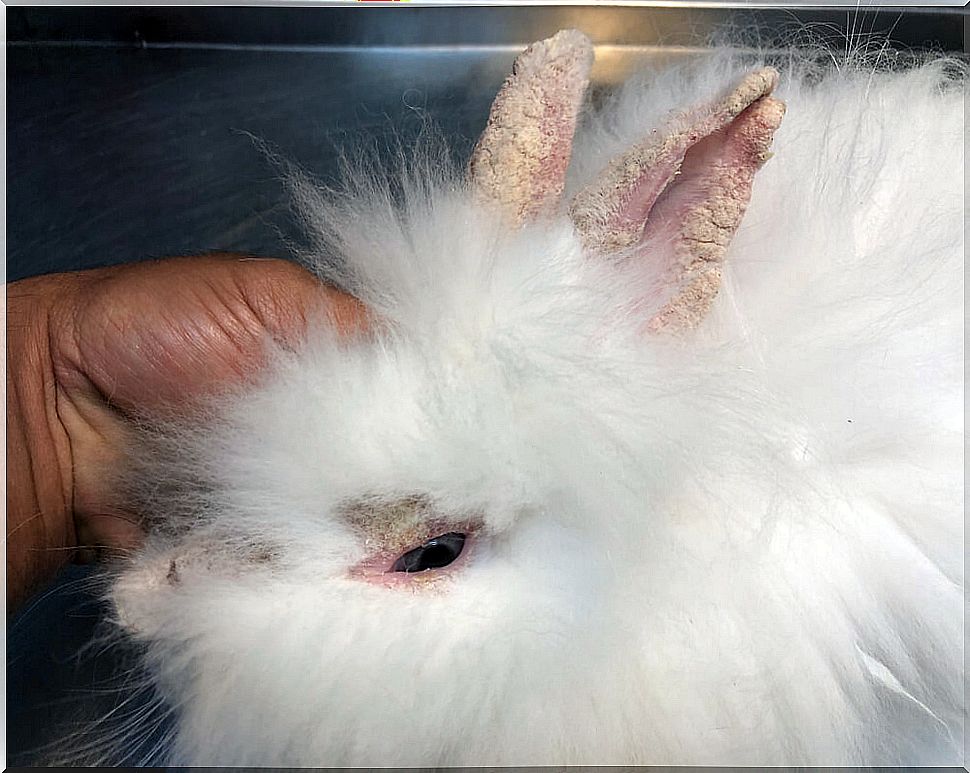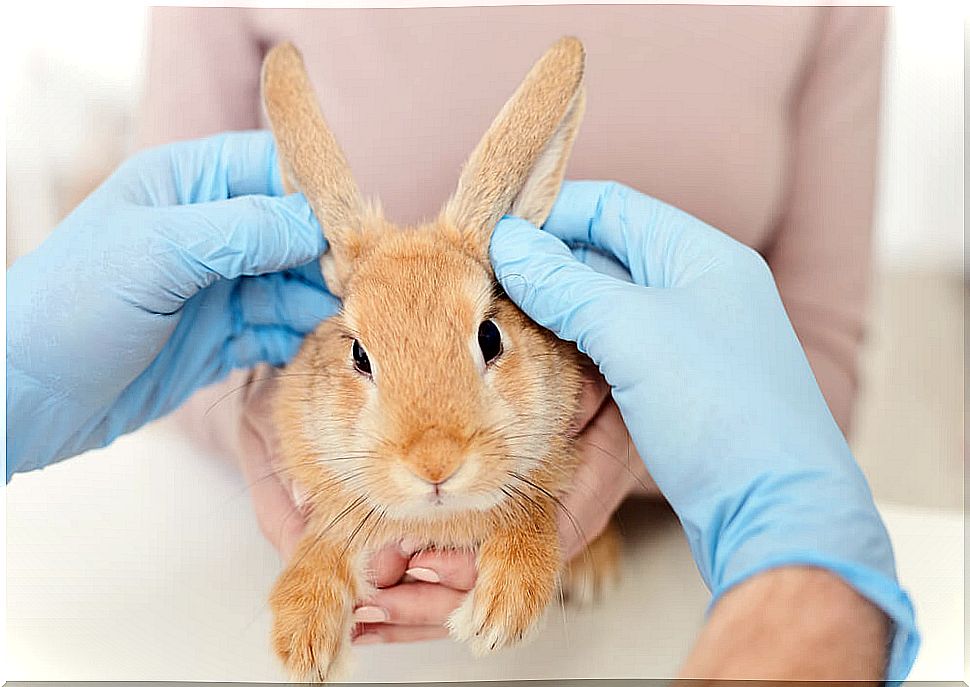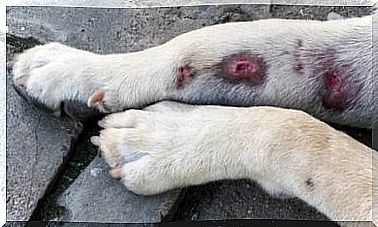Scabies In Rabbits: Symptoms And Treatment

There are many diseases ‘shared’ by several pets, but symptoms and treatments are not always the same. In this article we tell you everything you need to know about scabies in rabbits.
What is scabies in rabbits
Although rabbits are usually quite resistant to disease, sometimes they can catch certain viruses or bacteria. In the case of mange, it is more common in animals that live in hot, humid and rural areas than in urban spaces or with well-marked winters.
A rabbit is even more likely to get scabies if it lives in crowded conditions or in conditions that are not well cleaned and cared for, as can happen in a non-regulated farm or hatchery.

The main means of transmission of scabies is direct contact with an infected animal. Once it appears, it spreads quickly. Also parasites can ‘travel’ through different fabrics (for example a person’s clothes or a blanket) and even by the wind. They are also tiny and almost impossible to see!
The person responsible for this disease is a mite: males can jump (like fleas) and females are responsible for creating furrows in the dermis where they lay their eggs. Their reproductive capacity is amazing and although they only live for three weeks, they can leave offspring of millions of copies.
Symptoms of scabies in rabbits
Rabbits can ‘camouflage’ symptoms and by the time we find out the disease is quite advanced. The best way to identify mange is to frequently check your pet’s coat (mainly the head) and pay attention to certain changes in behavior. The main symptoms of scabies in rabbits are:
- Appearance of white scabs on different parts of the body, including the ears, around the eyes, nose or mouth, and between the toes.
- Malodor widespread
- Hair loss outside of the shedding season (usually spring)
- Cracks in the skin, sometimes with bleeding
- Excessive and nervous scratching that causes wounds or ulcers
- Earwax accumulation, scabs, otitis (in the case of ear scabies)
- Decay
- Loss of appetite
- Thickening of the dermis
- Nervous behavior, trouble sleeping, tics
How to treat scabies in rabbits

When there is the slightest doubt about scabies in your pet, it is very important that you take it to the vet so that it can indicate an appropriate treatment. You will probably perform certain studies that include a skin scraping and culture to confirm that they are mites and what type (it can be Scabei sarcoptes, Psoroptes, Notoedres, Demodex or Choriptes ).
The most common treatment for scabies in rabbits is with injections of a special medicine. The dose and repetitions will be indicated by the veterinarian. It is also usual to accompany the treatment with an oral antiparasitic (pills).
The owners in turn will have to comply with very strict hygiene habits, mainly in the cage and areas where the rabbit usually spends time. In addition, for scabies wounds to heal faster, a special topical treatment with a medicine called benzyl benzoate must be applied.
And to prevent the appearance of this disease, in addition to the complete hygiene of the home and the animals’ enclosure, we recommend that you place anti-mite products in their cage and that you eliminate the remains of dead hair that fall from the animal.
In this way it will be easier to eradicate the mite and prevent the disease from spreading among all our pets.








